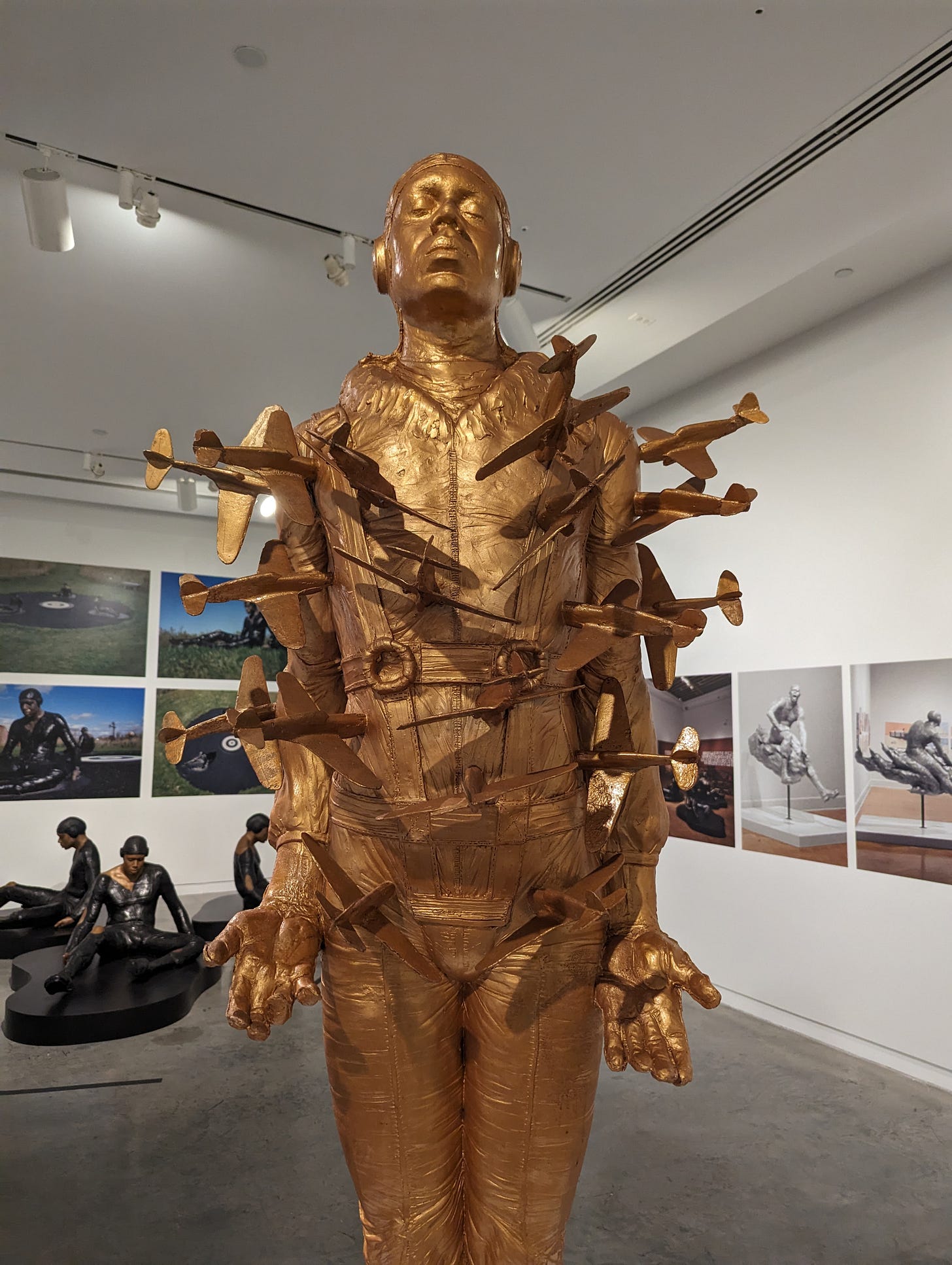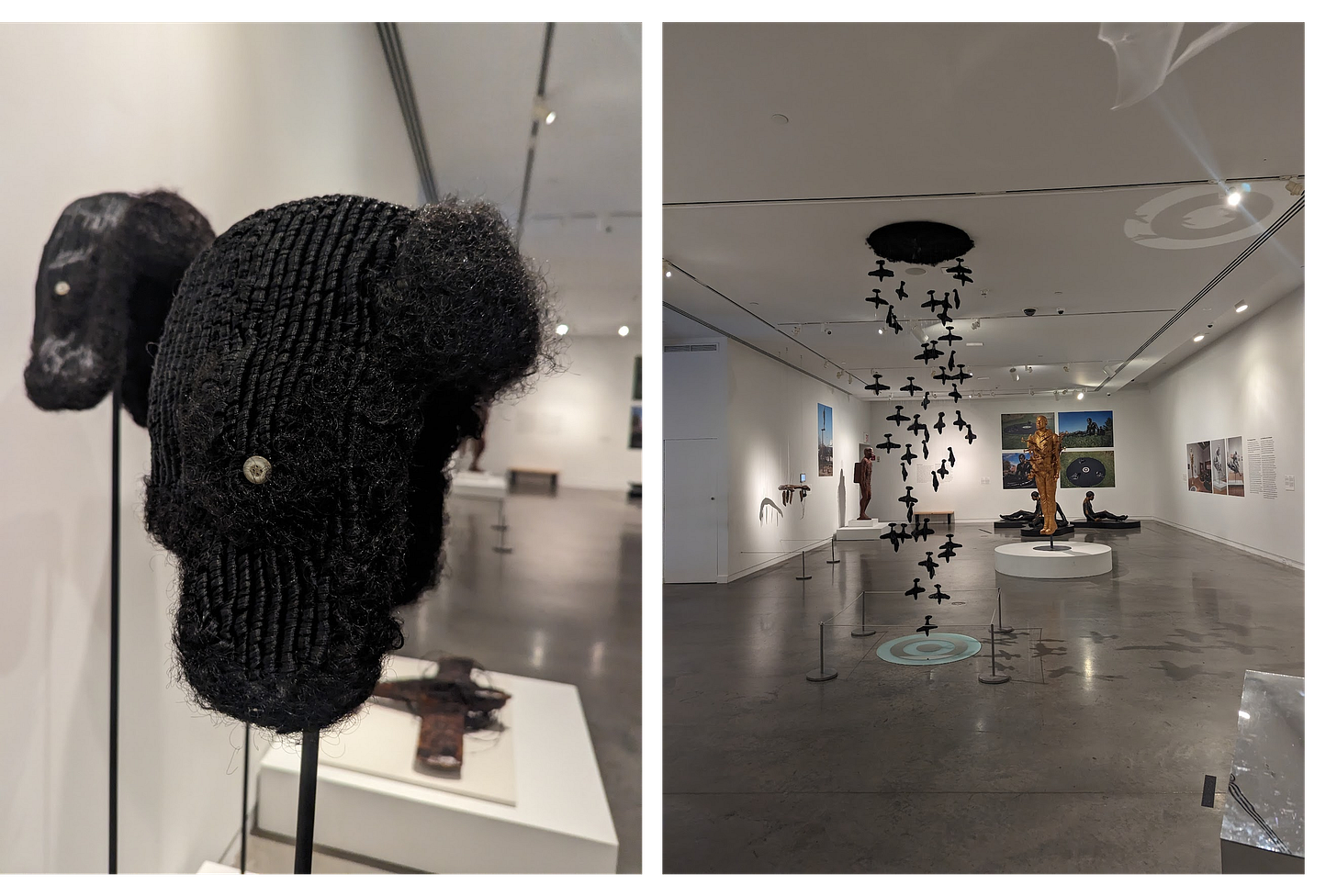Michael Richards and 9/11
The prophetic, thoughtful artist on a collision course with history.
One month after he turned 38, the promising Black American artist Michael Richards became one of the 2,996 casualties of 9/11. He had spent the night at his 92nd floor World Views Studio in the North Tower of The World Trade Center—a studio that was sponsored by the Lower Manhattan Cultural Council. Despite a flourishing artistic practice and an incredibly bright future ahead, he, like many Americans that day, was struck down by a plane helmed by terrorists.
Given the manner of his death, much has been made of the prescient nature of Richards’ Tar Baby vs. St. Sebastian which cast Richards himself as a Tuskegee airman being bombarded by planes. The title of the sculpture refers to the racist Southern folktale and the story of St. Sebastian, who was shot with arrows after refusing to deny his faith.
Richards in his own words, from an interview in 1997:
The Tuskegee airmen are a perfect metaphor because they were considered race men and were working to overturn all the myths and uplift the race…They were getting into those planes and flying twice as many missions as white pilots because they were standard bearers of their race.
[Consider] the interior psychological dialogue that must have been going on with them. Especially the fact that once they landed the planes and walked out, they could not eat in the same mess quarters as white officers. They had segregated barracks. Yet they were fighting for the ideas of freedom, justice, and the American way.
It's a very complicated metaphor. It has a lot to do with my own questions about my place within society. Working within society, making art, and basically making the culture of the society.
In the hands of a lesser artist, the concept and execution of this work, and many other pieces featured in the terrific exhibition at the Bronx Museum Michael Richards: Are you Down? (complete photo album here) would have fallen short.
The success of Richards’ sculptures hinge on the complexity of the underlying concepts. Clear execution and artistic output that engages the viewer—without the need for qualifiers and excessive explanation—separates the sublime from the hum-drum.
Clarity and accessibility play a crucial part in how moving a piece can be for a viewer, offering enough context to appreciate the artist's intention while leaving room for individual interpretation and engagement. Connecting with their audience, the best artists, like Richards, create work that resonates on an emotional and intellectual level, leaving a lasting impression that prompts further contemplation and consideration.
Rest in power Michael Richards (August 2, 1963 - September 11, 2001)



